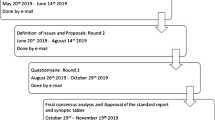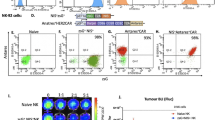Abstract
Purpose
Early detection of hepatocellular carcinoma (HCC) remains a clinical challenge. Glypican 3 (GPC3) is a proteoglycan highly specific for HCC and is a potential diagnostic and therapeutic target for HCC. This work aims to develop GPC3-targeted immuno-positron emission tomography (immunoPET) imaging strategies and to assess the diagnostic values in preclinical HCC models.
Methods
Flow cytometry was used to screen GPC3-positive HCC cell lines. The expression of GPC3 in HCCs was detected by immunohistochemistry on tissue microarray. A novel GPC3-specific single domain antibody (sdAb) was produced and labeled with gallium-68 (68Ga, T1/2 = 1.1 h) and fluorine-18 (18F, T1/2 = 1.8 h) to develop radiotracers with different half-lives. The diagnostic efficacies of the developed probes (i.e., [68Ga]Ga-NOTA-G2, [18F]F-G2, and [68Ga]Ga-NOTA-ABDG2) were interrogated in preclinical HCC models bearing varying GPC3 levels.
Results
GPC3 was strongly expressed on HCC cell lines and patients with poorly differentiated HCC. [68Ga]Ga-NOTA-G2 immunoPET imaging specifically delineated the subcutaneous HCC lesions, outperforming the traditional 18F-fluorodeoxyglucose PET and the nonspecific [68Ga]Ga-NOTA-NbGFP immunoPET. ImmunoPET imaging with [18F]F-G2 also efficiently diagnosed the tumors with clarity. Moreover, the fusion of G2 to an albumin-binding domain (ABD) significantly increased the tumor uptake and decreased kidney accumulation of the radiotracer when compared to [68Ga]Ga-NOTA-G2.
Conclusions
In the work, we successfully developed sdAb-derived GPC3-targeted immunoPET imaging strategies and characterized the superior diagnostic accuracies in preclinical HCC models. Furthermore, we synthesized a fusion protein ABDG2 with improved targeting and pharmacokinetic properties, serving as a promising candidate for developing radioimmunotherapy agents.







Similar content being viewed by others
References
Sung H, Ferlay J, Siegel RL, Laversanne M, Soerjomataram I, Jemal A, et al. Global cancer statistics 2020: GLOBOCAN estimates of incidence and mortality worldwide for 36 cancers in 185 countries. CA Cancer J Clin. 2021;71:209–49. https://doi.org/10.3322/caac.21660.
Forner A, Reig M, Bruix J. Hepatocellular carcinoma. The Lancet. 2018;391:1301–14. https://doi.org/10.1016/s0140-6736(18)30010-2.
Menahem B, Lubrano J, Duvoux C, Mulliri A, Alves A, Costentin C, et al. Liver transplantation versus liver resection for hepatocellular carcinoma in intention to treat: an attempt to perform an ideal meta-analysis. Liver Transpl. 2017;23:836–44. https://doi.org/10.1002/lt.24758.
Ho M, Kim H. Glypican-3: a new target for cancer immunotherapy. Eur J Cancer. 2011;47:333–8. https://doi.org/10.1016/j.ejca.2010.10.024.
Li N, Wei L, Liu X, Bai H, Ye Y, Li D, et al. A frizzled-like cysteine-rich domain in glypican-3 mediates Wnt binding and regulates hepatocellular carcinoma tumor growth in mice. Hepatology. 2019;70:1231–45. https://doi.org/10.1002/hep.30646.
Xue R, Feng J, Meng Q, Lv F, Zhu Y, Yu H, et al. The significance of glypican-3 expression profiling in the tumor cellular origin theoretical system for hepatocellular carcinoma progression. J Gastroenterol Hepatol. 2017;32:1503–11. https://doi.org/10.1111/jgh.13736.
Sangiovanni A, Manini MA, Iavarone M, Romeo R, Forzenigo LV, Fraquelli M, et al. The diagnostic and economic impact of contrast imaging techniques in the diagnosis of small hepatocellular carcinoma in cirrhosis. Gut. 2010;59:638–44. https://doi.org/10.1136/gut.2009.187286.
Jadvar H, Alavi A, Gambhir SS. 18F-FDG uptake in lung, breast, and colon cancers: molecular biology correlates and disease characterization. J Nucl Med. 2009;50:1820–7. https://doi.org/10.2967/jnumed.108.054098.
Khan MA, Combs CS, Brunt EM, Lowe VJ, Wolverson MK, Solomon H, et al. Positron emission tomography scanning in the evaluation of hepatocellular carcinoma. J Hepatol. 2000;32:792–7.
Yun M, Bang SH, Kim JW, Park JY, Kim KS, Lee JD. The importance of acetyl coenzyme A synthetase for 11C-acetate uptake and cell survival in hepatocellular carcinoma. J Nucl Med. 2009;50:1222–8. https://doi.org/10.2967/jnumed.109.062703.
Ho C, Simon CH, Yeung DW. 11C-acetate PET imaging in hepatocellular carcinoma and other liver masses. J Nucl Med. 2003;44:213–21.
Castilla-Lievre MA, Franco D, Gervais P, Kuhnast B, Agostini H, Marthey L, et al. Diagnostic value of combining 11C-choline and 18F-FDG PET/CT in hepatocellular carcinoma. Eur J Nucl Med Mol Imaging. 2016;43:852–9. https://doi.org/10.1007/s00259-015-3241-0.
Ayuso C, Rimola J, Vilana R, Burrel M, Darnell A, Garcia-Criado A, et al. Diagnosis and staging of hepatocellular carcinoma (HCC): current guidelines. Eur J Radiol. 2018;101:72–81. https://doi.org/10.1016/j.ejrad.2018.01.025.
Shi D, Shi Y, Kaseb AO, Qi X, Zhang Y, Chi J, et al. Chimeric antigen receptor-glypican-3 T-cell therapy for advanced hepatocellular carcinoma: results of phase I trials. Clin Cancer Res. 2020;26:3979–89. https://doi.org/10.1158/1078-0432.CCR-19-3259.
Sham JG, Kievit FM, Grierson JR, Miyaoka RS, Yeh MM, Zhang M, et al. Glypican-3-targeted 89Zr PET imaging of hepatocellular carcinoma. J Nucl Med. 2014;55:799–804. https://doi.org/10.2967/jnumed.113.132118.
Liu M, Li L, Jin D, Liu Y. Nanobody-a versatile tool for cancer diagnosis and therapeutics. Wiley Interdiscip Rev Nanomed Nanobiotechnol. 2021;13:e1697. https://doi.org/10.1002/wnan.1697.
Muyldermans S. nanobodies: natural single-domain antibodies. Annu Rev Biochem. 2013;82:775–97. https://doi.org/10.1146/annurev-biochem-063011-092449.
Wang C, Chen Y, Hou Y, Liu Q, Zhang D, Zhao H, et al. ImmunoPET imaging of multiple myeloma with [68Ga]Ga-NOTA-Nb1053. Eur J Nucl Med Mol Imaging. 2021;48:2749–60. https://doi.org/10.1007/s00259-021-05218-1.
Zhao H, Wang C, Yang Y, Sun Y, Wei W, Wang C, et al. ImmunoPET imaging of human CD8(+) T cells with novel 68Ga-labeled nanobody companion diagnostic agents. J Nanobiotechnology. 2021;19:42. https://doi.org/10.1186/s12951-021-00785-9.
Jonsson A, Dogan J, Herne N, Abrahmsen L, Nygren PA. Engineering of a femtomolar affinity binding protein to human serum albumin. Protein Eng Des Sel. 2008;21:515–27. https://doi.org/10.1093/protein/gzn028.
Kubala MH, Kovtun O, Alexandrov K, Collins BM. Structural and thermodynamic analysis of the GFP: GFP-nanobody complex. Protein Sci. 2010;19:2389–401. https://doi.org/10.1002/pro.519.
Wei W, Zhang D, Wang C, Zhang Y, An S, Chen Y, et al. Annotating CD38 expression in multiple myeloma with [(18)F]F-Nb1053. Mol Pharm. 2021. https://doi.org/10.1021/acs.molpharmaceut.1c00733.
Garousi J, von Witting E, Borin J, Vorobyeva A, Altai M, Vorontsova O, et al. Radionuclide therapy using ABD-fused ADAPT scaffold protein: proof of principle. Biomaterials. 2021;266:120381. https://doi.org/10.1016/j.biomaterials.2020.120381.
Ishiguro T, Sano Y, Komatsu SI, Kamata-Sakurai M, Kaneko A, Kinoshita Y, et al. An anti-glypican 3/CD3 bispecific T cell-redirecting antibody for treatment of solid tumors. Sci Transl Med. 2017; 9: eaal4291.
Li D, Li N, Zhang YF, Fu H, Feng M, Schneider D, et al. Persistent polyfunctional chimeric antigen receptor T cells that target glypican 3 eliminate orthotopic hepatocellular carcinomas in mice. Gastroenterology. 2020;158(2250–65):e20. https://doi.org/10.1053/j.gastro.2020.02.011.
Fleming BD, Urban DJ, Hall MD, Longerich T, Greten TF, Pastan I, et al. Engineered anti-GPC3 immunotoxin, HN3-ABD-T20, produces regression in mouse liver cancer xenografts through prolonged serum retention. Hepatology. 2020;71:1696–711. https://doi.org/10.1002/hep.30949.
Sham JG, Kievit FM, Grierson JR, Chiarelli PA, Miyaoka RS, Zhang M, et al. Glypican-3-targeting F(ab’)2 for 89Zr PET of hepatocellular carcinoma. J Nucl Med. 2014;55:2032–7. https://doi.org/10.2967/jnumed.114.145102.
Zhu D, Qin Y, Wang J, Zhang L, Zou S, Zhu X, et al. Novel glypican-3-binding peptide for in vivo hepatocellular carcinoma fluorescent imaging. Bioconjug Chem. 2016;27:831–9. https://doi.org/10.1021/acs.bioconjchem.6b00030.
Natarajan A, Zhang H, Ye W, Huttad L, Tan M, Chua MS, et al. A humanized anti-GPC3 antibody for immuno-positron emission tomography imaging of orthotopic mouse model of patient-derived hepatocellular carcinoma xenografts. Cancers (Basel). 2021;13:3977. https://doi.org/10.3390/cancers13163977.
Wang W, Hu Z. Targeting peptide-based probes for molecular imaging and diagnosis. Adv Mater. 2019;31:e1804827. https://doi.org/10.1002/adma.201804827.
Berman RM, Kelada OJ, Gutsche NT, Natarajan R, Swenson RE, Fu Y, et al. In vitro performance of published glypican 3-targeting peptides TJ12P1 and L5 indicates lack of specificity and potency. Cancer Biother Radiopharm. 2019;34:498–503. https://doi.org/10.1089/cbr.2019.2888.
Wei W, Rosenkrans ZT, Liu J, Huang G, Luo Q, Cai W. ImmunoPET: concept, design, and applications. Chem Rev. 2020;120:3787–851. https://doi.org/10.1021/acs.chemrev.9b00738.
Ackaert C, Smiejkowska N, Xavier C, Sterckx YGJ, Denies S, Stijlemans B, et al. Immunogenicity risk profile of nanobodies. Front Immunol. 2021;12:632687. https://doi.org/10.3389/fimmu.2021.632687.
Chomet M, van Dongen G, Vugts DJ. State of the art in radiolabeling of antibodies with common and uncommon radiometals for preclinical and clinical immuno-PET. Bioconjug Chem. 2021;32:1315–30. https://doi.org/10.1021/acs.bioconjchem.1c00136.
Altunay B, Morgenroth A, Beheshti M, Vogg A, Wong NCL, Ting HH, et al. HER2-directed antibodies, affibodies and nanobodies as drug-delivery vehicles in breast cancer with a specific focus on radioimmunotherapy and radioimmunoimaging. Eur J Nucl Med Mol Imaging. 2021;48:1371–89. https://doi.org/10.1007/s00259-020-05094-1.
Keyaerts M, Xavier C, Heemskerk J, Devoogdt N, Everaert H, Ackaert C, et al. Phase I study of 68Ga-HER2-nanobody for PET/CT assessment of HER2 expression in breast carcinoma. J Nucl Med. 2016;57:27–33. https://doi.org/10.2967/jnumed.115.162024.
D’Huyvetter M, Vos J, Caveliers V, Vaneycken I, Heemskerk J, Duhoux FP, et al. Phase I trial of (131)I-GMIB-anti-HER2-VHH1, a new promising candidate for HER2-targeted radionuclide therapy in breast cancer patients. J Nucl Med. 2021;62:1097–105. https://doi.org/10.2967/jnumed.120.255679.
Vosjan MJ, Vercammen J, Kolkman JA, Stigter-van Walsum M, Revets H, van Dongen GA. Nanobodies targeting the hepatocyte growth factor: potential new drugs for molecular cancer therapy. Mol Cancer Ther. 2012;11:1017–25. https://doi.org/10.1158/1535-7163.MCT-11-0891.
Bao G, Tang M, Zhao J,Zhu X. Nanobody: a promising toolkit for molecular imaging and disease therapy. EJNMMI Research. 2021; 11. https://doi.org/10.1186/s13550-021-00750-5
Acknowledgements
We thank colleagues at our department for the helpful discussions.
Funding
This research was funded in part by the National Key Research and Development Program of China (Grant No. 2020YFA0909000 and 2021YFA0910000), the National Natural Science Foundation of China (Grant No. 82001878 and 82171972), the Shanghai Rising-Star Program (Grant No. 20QA1406100), and the Interdisciplinary Program of Shanghai Jiao Tong University (Grant No.YG2019QNA27).
Author information
Authors and Affiliations
Contributions
W. Wei, S. An, G. Huang, and J. Liu together designed the project. W. Wei, S. An, and G. Huang obtained the funds supporting the work. S. An and D. Zhang performed the majority of the experiments, under the supervision of W. Wei, G. Huang, and J. Liu, and with the help of Y. Zhang and C. Wang. S. An and L. Shi together analyzed the tissue microarray data and clinical data. S. An drafted the manuscript and the three senior authors revised and finalized the manuscript.
Corresponding authors
Ethics declarations
Conflict of interest
W. Wei, S. An, and J. Liu are co-inventors on a provisional patent application encompassing the technologies developed in the work. No other competing interests exist.
Additional information
Publisher’s note
Springer Nature remains neutral with regard to jurisdictional claims in published maps and institutional affiliations.
This article is part of the Topical Collection on Preclinical Imaging.
Supplementary Information
Below is the link to the electronic supplementary material.
Rights and permissions
About this article
Cite this article
An, S., Zhang, D., Zhang, Y. et al. GPC3-targeted immunoPET imaging of hepatocellular carcinomas. Eur J Nucl Med Mol Imaging 49, 2682–2692 (2022). https://doi.org/10.1007/s00259-022-05723-x
Received:
Accepted:
Published:
Issue Date:
DOI: https://doi.org/10.1007/s00259-022-05723-x




